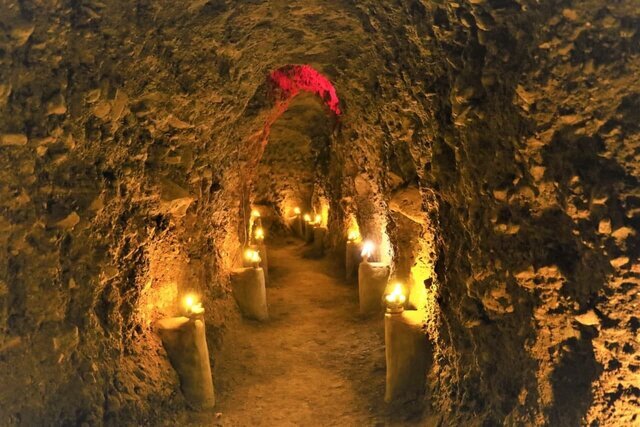Vast troglodyte complex in central Iran may gain UNESCO status: official

TEHRAN – Tarkhoran troglodytic complex, which is situated near Tafresh in Markazi province, is capable of being registered in the UNESCO World Heritage list, the provincial tourism chief has said.
“This pristine [troglodytic] collection is untouched and vast yet it enjoys special architecture. And such special conditions make it capable of a possible UNESCO registration,” ISNA quoted Mostafa Marzban as saying on Monday.
For the first step, a dossier on the troglodyte complex is being developed to be submitted to the Ministry of Cultural Heritage, Tourism, and Handicrafts for national registration, the official noted.
Tarkhoran troglodytic architecture is said to be a sample of local subterranean construction which is situated in the modern neighborhood of the same name.
Some 4,500 pieces of potteries and glazed tiles, dating back to a period between the 5th and 10th centuries BC, were unearthed by archaeologists during the first round of excavation.
Experts say such tight labyrinthine underground “cities”, which were used as defensive shelters in wartime, still boast lots of charms as destinations for domestic and foreign travelers.
The handmade troglodytic architecture is a distinctive method, which does not require major construction materials and consequently very low environmental load since its creation is majorly by extraction of space rather than the addition of mass. The Architecture by subtraction rather than addition provides many opportunities that call for comprehensive research and analysis.
As there is no obligatory method in making spaces rather than material cohesion, there is no priority in constructing a troglodytic structure, either from the roof or from the floor. Dealing with stone blocks, rocks, and piles of the earth requires a variety of tools as an ax, hammer, chisel, and sledgehammer to shape the interior space.
Based on the academic findings, the creation of handmade troglodytic architectural sites depends on several factors including climatic and geographical conditions, defense, security, durability, and religion, which were deeply tied with the cultural, political, social, and economic circumstances. This architecture can be classified into various formal types in terms of their external form, internal space, and function (religious, tombs, residential, and shelter).
In Iran, many magnificent cases of this architecture have taken place in different regions due to its various climates. This unique architecture is at odds with the conventional settlement patterns and construction methods and is always can take advantage of the mountains and valleys on the floor or wall, which is a good way to control climate fluctuation in different regions.
AFM

Leave a Comment